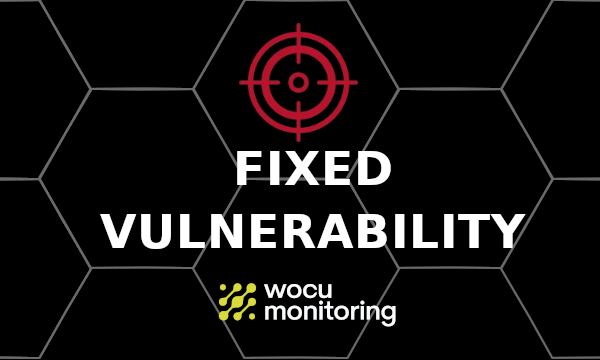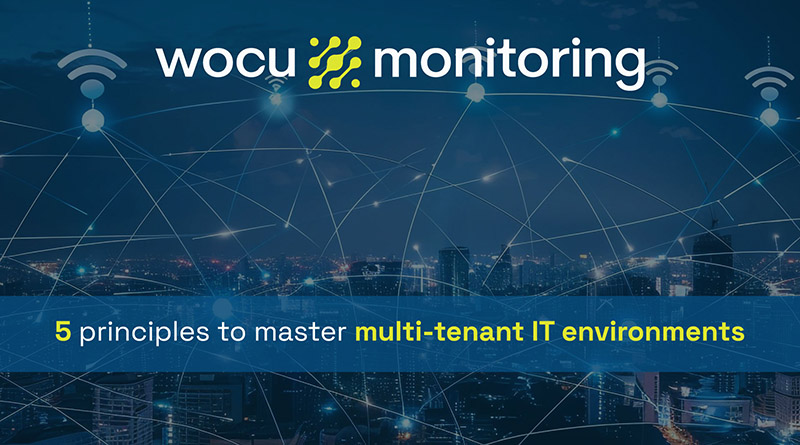 The onset of the COVID-19 pandemic brought about a paradigm shift in various sociocultural and work-related aspects. Telecommuting was one of the first measures implemented, and unlike many others, it’s here to stay.
The onset of the COVID-19 pandemic brought about a paradigm shift in various sociocultural and work-related aspects. Telecommuting was one of the first measures implemented, and unlike many others, it’s here to stay.
Although our team was already familiar with remote work, this modality prevailed over others when it came time to decide whether in-person attendance and returning to the office were necessary. The answer was clear to us.
At WOCU-Monitoring, we firmly believe in telecommuting. The increase in productivity, flexibility, positive feedback, coupled with personal benefits, has been evident. And this wouldn’t have been possible without the commitment, effort, and trust of all parties involved.
In this post, we want to show you why we advocate for telecommuting as a cultural norm within our organization and how we justified our decision at the time.
Telecommuting: Yes or No
There doesn’t have to be a dichotomy regarding telecommuting. There are hybrid modalities where both types can be combined to leverage the benefits of each. But remember, telecommuting is a perfectly viable option for both the company and the employee.
In general, we can discern three scenarios:- Remote-Friendly: Remote work is allowed certain days of the week, but priority is given to in-person attendance at physical offices.
- Remote-First: Working remotely (either from home or any other location, including the office) is the default option. Consequently, processes are adapted to this rule.
- Full-Remote: There are no physical offices. All work is done remotely.
Key Strategies for Embracing Telecommuting
Adapting to telecommuting is not easy and depends on firm commitment both individually and collectively. Here are some tips to make the most of it:
-
Productivity is measured by objectives, so it’s essential to define, assign, and track KPIs to maintain organizational performance.
-
Frequent communication at a click away, using video conferencing tools, online chats, etc.
-
The future of work is asynchronous, and as an organization, we must promote it through established channels and limiting interruptions that disrupt workflow and productivity.
-
Eliminate water cooler conversations as that information never reaches the rest of the team. Instead, meetings can be recorded and shared afterward, minutes can be drafted, conversations can be held through ticketing tools, chats, etc.
-
Document in detail every action, decision, or change made to keep a record that can be consulted at any time.
-
In the spirit of transparency, brainstorming sessions, collaborations, and decision-making processes should not be limited to those present in the office. This also includes managers or executives of the company.
Advantages and (Potential) Disadvantages for the Employee
Below are the advantages, or in other words, the benefits that telecommuting offers to the employee:-
Lower risk of contracting illnesses due to contagion or accidents while commuting to work. It also reduces stress from crowds, traffic jams, peak hours on public transportation, etc.
-
Flexibility in schedule, allowing adaptation of the workday according to personal needs (balance, meals, exercise, etc.). Working during hours when we are most productive achieves the perfect balance.
-
Reduced stress and increased quality of life by being able to work in an organized, comfortable space that feels like your own.
-
Reduced interruptions and increased concentration by mitigating unnecessary interactions between employees.
- Comfortable work attire. At least from the waist down 😉
-
Financial savings by reducing expenses, such as meals outside the home, public transportation costs, personal transportation fuel, parking fees, etc.
- Could telecommuting not work for me?

It should be emphasized that telecommuting in a Remote-First model is optional, and alternatives should be sought to address any issues, whether due to lack of technological equipment or difficulty in separating workspace from personal space. As a preventive measure, special attention is recommended in the personnel selection processes.
- Less effective communication in online meetings?
Using a camera is advisable as body language aids in communication. Being punctual at the start and end of meetings, as well as preparing them in advance, is essential. We’ve been proactive on this issue with the publication and adoption of a decalogue of best practices in online meetings.
- Feelings of loneliness, isolation, or lack of integration?
Allocate time during the workday for conversation (virtual coffees), and if possible, schedule regular in-person meetings (without laptops) to strengthen team cohesion. Mental health is always a priority in our work environment.
Advantages and (Potential) Disadvantages for the Company
The benefits of telecommuting for companies are manifold, although there are also factors that can work in the opposite direction; however, these can be mitigated if the right resources and tools are available.
Clear advantages include:-
Greater ease in finding talent (even cheaper). Decentralization creates more opportunities.
-
More productive teams, reducing distractions, provided that supervision, support, and adequate equipment are available.
-
Lower turnover in teams, implying greater stability, engagement, cohesion, and overall motivation. Telecommuting is valued as a quality-of-life improvement.
-
Reduced number and duration of online meetings, by focusing on session objectives and expected outcomes.
-
In the Full-Remote model, there is a reduction in costs by minimizing office space and logistics. You can also opt for the use of coworking spaces as an alternative to office rentals.
-
Minimization of work absenteeism by having greater flexibility in managing schedules and agendas.

- Could telecommuting lead to emotional disengagement of employees from the company?
Employee identification with the company or their sense of belonging to it may be affected in a telecommuting model. For this reason, regular meetings at all levels where employees are involved in the company’s evolution and progress should be established.
- Is onboarding more complicated?
Integration into the team from day 0 through the definition and documentation of a clear induction process or policy. A set of guidelines and procedures should help with the progressive integration into the job for a productive start.
- Loss of control over employees and business?
It will be the responsibility of managers, leaders, or other related positions to demonstrate their ability to manage, supervise, and support a distributed team.
Management in a Remote Environment: How We Work at WOCU-Monitoring?
- Transparency as a fundamental pillar
“Say why, not just what”. It’s important to provide all the context and justify every action taken to avoid misunderstandings, duplicate tasks, or future rounds of questions that could affect efficiency.
- Prioritization and organization
We try to promote individual and asynchronous work. It’s essential for each team member to clearly know the priorities and tasks they need to undertake.
- Empathy
More difficult to perceive when behind a screen but more necessary than ever. Different moods and adverse situations where feeling supported, heard, and understood are essential for the smooth flow of work teams.
- Trust your team
Communication and transparency are the foundation of our telecommuting model. Generating, transmitting, and maintaining that trust is essential for the remote team to function efficiently and cohesively.
- Seek (and promote) the success of others
In a healthy telecommuting environment, it’s important to highlight, value, and promote the individual effort and results achieved by employees and avoid them being overshadowed by hierarchies and chains of command.
- Document processes
Proactively record and standardize processes to reduce errors in project implementation, improve efficiency, and reduce costs by eliminating unnecessary operational resources.
- Definition of a long-term roadmap
Developing a roadmap for prioritizing tasks/milestones, aligned with strategic understanding and innovation. It’s a practical tool capable of perfectly meeting project management expectations.
- Agile methodologies for development
We implement agile methodology for continuous, evolutionary, and iterative development, placing greater emphasis on the practical value of the product.
- Development, testing, and deployment process
Geared towards incrementally enhancing product functionality. It involves a continuous integration cycle, starting with a code change and ending with the construction of a software artifact.
- Notifications through organized channels
Communication channels, our greatest allies. We have various channels with specific purposes, where team members can chat.
There is no excuse; the development of Information Technologies (IT) ensures that telecommuting becomes a stable and viable option, where reconciliation, flexibility, and productivity coexist.




